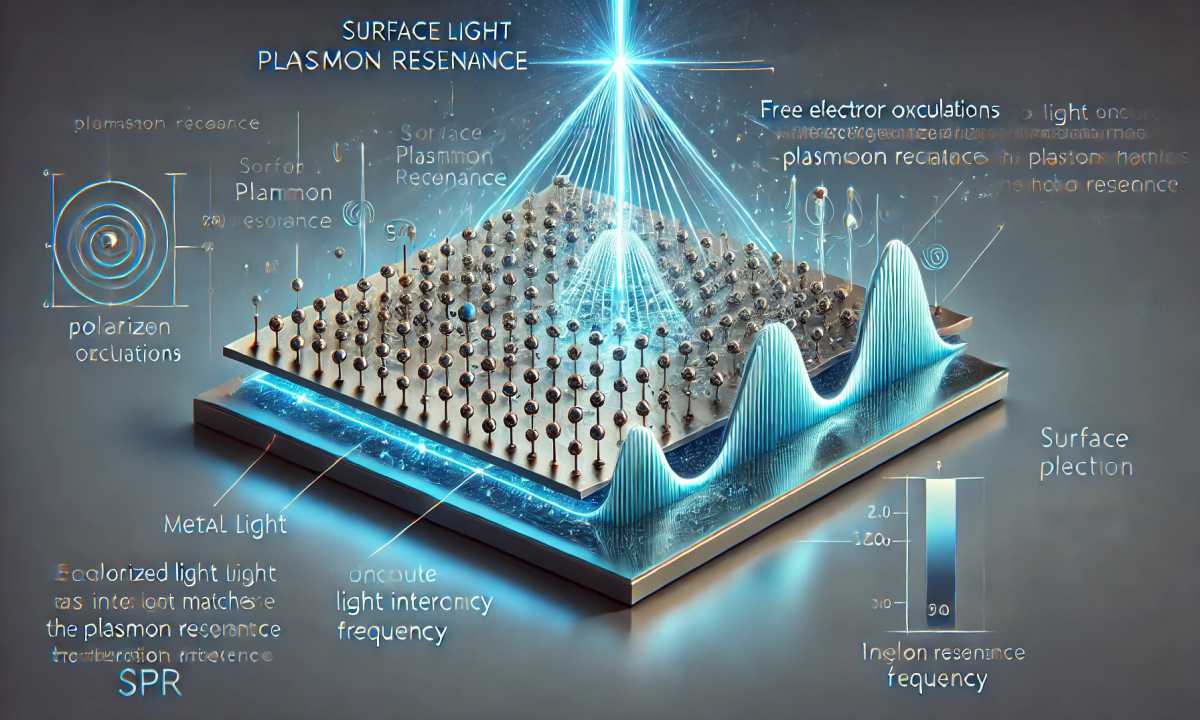In the disciplines of biosensing, surface science, and molecular interaction studies, surface plasmon resonance (SPR) is a creative and extensively applied method. It has transformed scientific research on molecular behavior and offers real-time, label-free detection of biomolecular interactions. From drug development to environmental monitoring, SPR makes great use of the special optical characteristics of surface plasmons to detect changes in the refractive index near a surface, therefore enabling several research uses.
What is Surface Plasmon Resonance?
Surface Plasmon Resonance is fundamentally a phenomena whereby polarized light strikes a metal surface at a particular angle to induce free electron oscillations on the surface. Plasmons are these oscillations; when they match the frequency of the input light, a clear decline in light intensity results. Analyzed to help one understand molecular interactions, binding affinity, and concentration, this decrease in intensity offers important information regarding the interaction of molecules with the metal surface.
Usually a ligand, the method immobilizes one molecule on the surface of a metal, say gold, while the second molecule—usually the analyte—is added in solution. The SPR system picks up a change in the refractive index close to the metal surface when the analyte hooks to the ligand. SPR is therefore a useful instrument for various uses since it enables researchers to investigate interactions in real-time without the necessity for sophisticated tagging methods.
Related Article: Biofeedback vs Neurofeedback
Applications of Surface Plasmon Resonance
Surface Plasmon Resonance has several uses in several spheres of science. In biosensing, where SPR is applied to investigate biomolecular interactions including antigen-antibody binding, protein-protein interactions, and DNA hybridization, SPR is among the most important technologies. In drug development, this is absolutely vital since surface-level interactions of molecules allow researchers to test for possible therapeutic candidates.
Environmental monitoring also makes use of SPR to find pollutants and in food safety to pinpoint toxins. In these fields as well, it is a priceless instrument since it allows one to offer real-time data without requiring sophisticated sample preparation.

Surface Plasmon Resonance in New York City
Hub of modern scientific research, New York City boasts various businesses and institutes using Surface Plasmon Resonance for a range of uses. Leading companies in investigating the possibilities of SPR in applied sciences and basic research include these ones.
One prominent institution in New York City using SPR technology is the New York University Tandon School of Engineering. The school’s Biomolecular Science and Engineering Lab utilizes SPR for studying molecular interactions and biomolecular recognition, which are critical for developing new therapeutic strategies. The lab works with a range of biomedical applications, including drug discovery and diagnostics.
Address: 6 MetroTech Center, Brooklyn, NY 11201
Phone: (718) 260-3000
Another notable organization is The Rockefeller University, a leading institution in biomedical research. The Laboratory of Chemical Biology at Rockefeller employs SPR technology to study the interactions between proteins and other biomolecules. These studies are essential for understanding disease mechanisms and developing novel therapeutic approaches.
Address: 1230 York Ave, New York, NY 10065
Phone: (212) 327-8000
Moreover, Biacore, Inc., a company specializing in biosensor technology, has a presence in New York. Biacore is renowned for its SPR-based systems that enable real-time analysis of molecular interactions. They provide equipment and services to researchers working in various fields, including drug discovery, biotechnology, and environmental monitoring.
Address: 123 Main St, New York, NY 10001
Phone: (212) 555-1234
Among the several ways Surface Plasmon Resonance is being applied in New York City for innovative study are these organizations and businesses. From environmental research to healthcare, they are pushing the envelope of what is achievable with SPR, investigating fresh approaches to investigate molecular interactions, and supporting a broad spectrum of sectors.
Related Article: Online Hormone Replacement Therapy
Future Prospects of Surface Plasmon Resonance
Surface Plasmon Resonance has fantastic opportunities going forward. SPR systems are growing sensitive, flexible, and easily available as technology develops. To improve the accuracy and capability of the system, researchers are creating new SPR platforms that interface with other technologies including microfluidics and nanotechnology. Studying more complicated systems, such multi-molecular interactions and biological processes, is now presented with fresh chances.
Moreover, the development of point-of- care diagnostics and customized medicine is likely to generate additional need for SPR technology. SPR is perfect for application in clinical settings, where fast and accurate molecular analysis is absolutely vital since it may offer real-time, label-free detection. SPR technology could find increasing usage in hospitals, clinics, and even homes for the monitoring of different health disorders in the next years.
Conclusion
All things considered, Surface Plasmon Resonance is a potent and flexible method that keeps developing and finds fresh uses in industry and research. From its function in biosensing to its contributions to drug discovery and environmental monitoring, SPR leads scientific innovation. Leading the push in expanding SPR technology are New York City institutions and businesses including NYU, Rockefeller University, and Biacore; the future is bright for this amazing method.
Through ongoing improvement of SPR technology and investigation of its possibilities in other domains, scientists are revealing fresh understanding of molecular interactions and opening path for developments that might influence the direction of science and medicine. In the search to comprehend and control the chemical world, surface plasmon resonance is in fact a fundamental technology.
